


Less than half of those who moved to Jersey in 2017 remained on the island five years later, according to a new report.
Statistics Jersey’s ‘Inward Migrant Analysis Report’ found that only 43% of the 4,390 people who arrived in the island in 2017 remained by 2022.
Young adults aged 16 to 29, people with registered status, and those of Polish and other European nationalities were among the groups least likely to stay.
The 2017 inward migrant cohort differed from the demographics of the local population at the time, according to the report.
It read: “Compared to the total population resident in Jersey at the end of 2017, people who migrated to Jersey had some notable differences in characteristics.”
Migrants were predominantly young, with 60% aged between 16 and 39, compared to just 30% of long-term islanders.
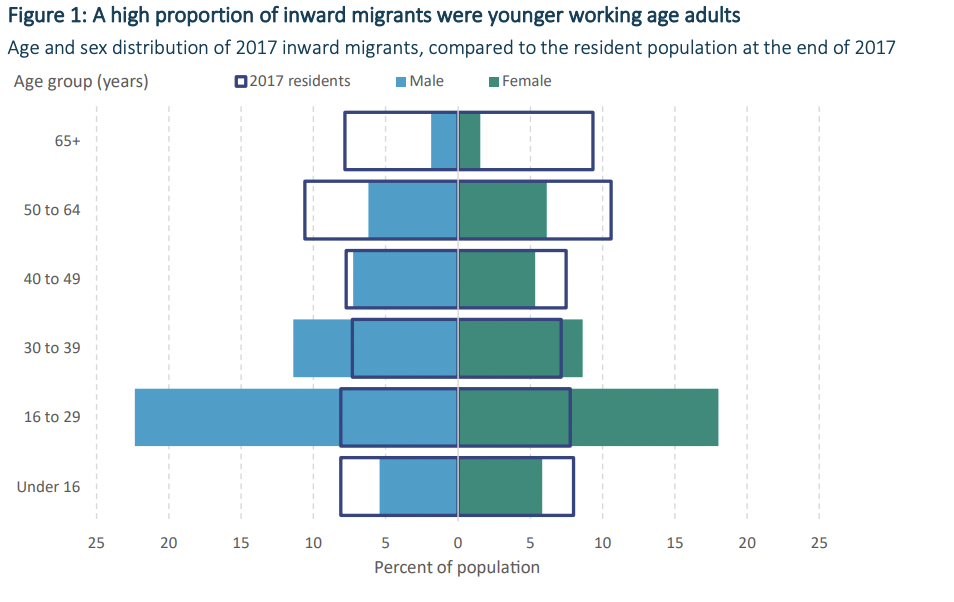
Pictured: A high proportion of inward migrants were younger working-age adults. (Statistics Jersey)
The report also found that "a slightly higher proportion" of inward migrants were male (54% compared to 50% of residents).
In terms of nationality, just under half (48%) of inward migrants aged 20 and over were from non-British or non-Jersey backgrounds, compared to 22% of the resident population.
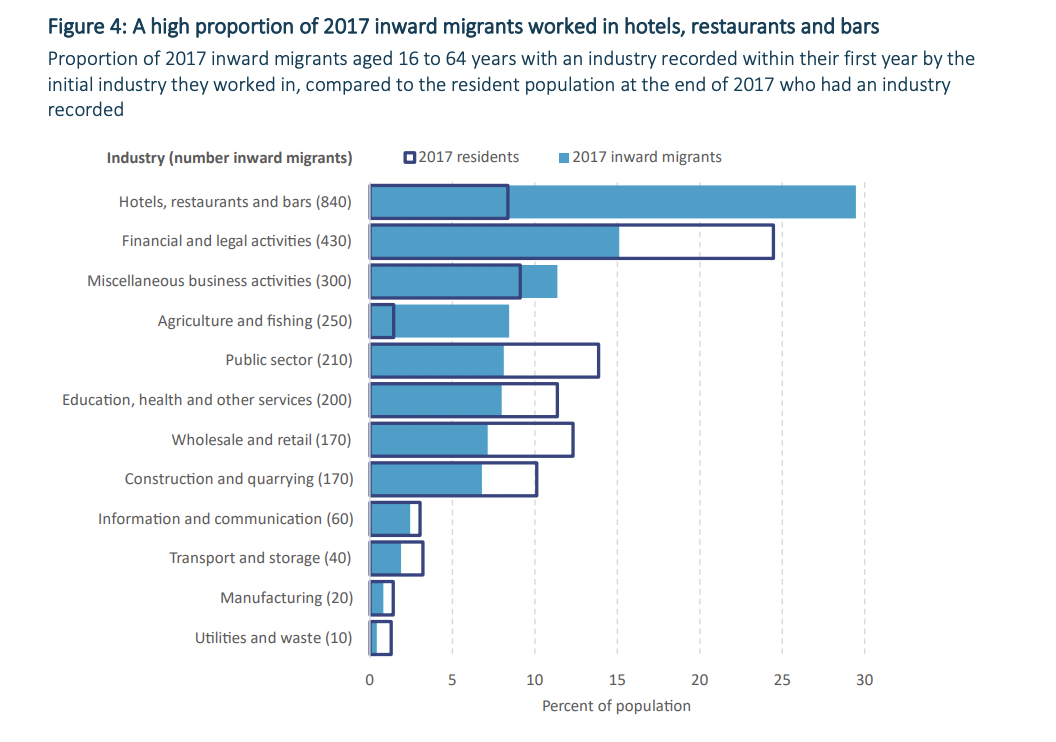
Pictured: A high proportion of 2017 inward migrants worked in hotels, restaurants and bars.
Employment trends showed that 29% of inward migrants worked in hotels, restaurants, and bars – sectors that employed just 8% of residents.
Conversely, migrants were underrepresented in financial and legal services, with only 15% working in these industries compared to 24% of residents.
Young working-age adults were the least likely to stay, with just 33% of migrants aged 16 to 29 remaining after five years.
However, children under 16 were the most likely to stay, likely because they migrated with their families as dependents.
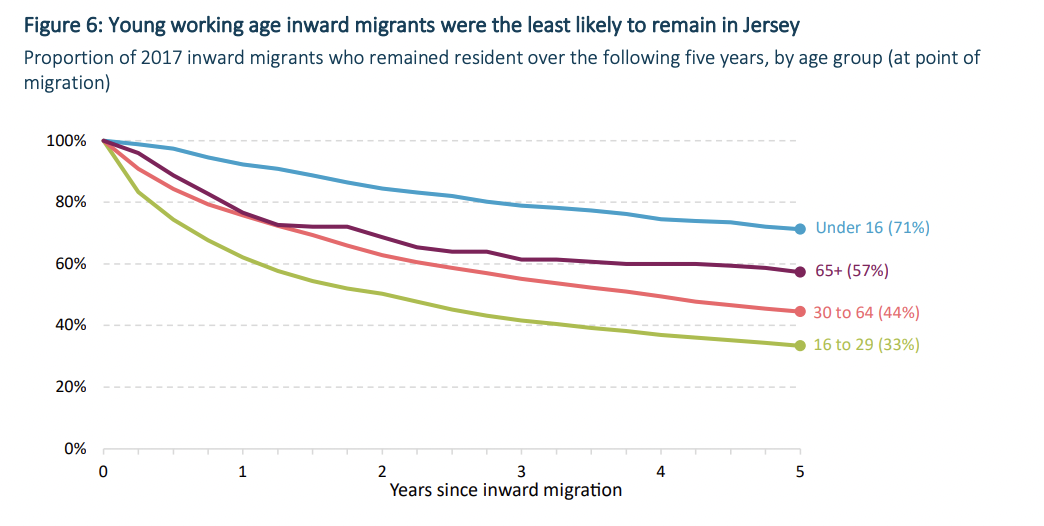
Pictured: Young working-age inward migrants were the least likely to remain in Jersey.
Migrants with registered status also had low retention rates, as did those of Polish nationality (22%) and other European nationalities (27%).
By comparison, nearly half (49%) of migrants from Portuguese or Madeiran backgrounds stayed, as did 52% of British or Jersey nationals.
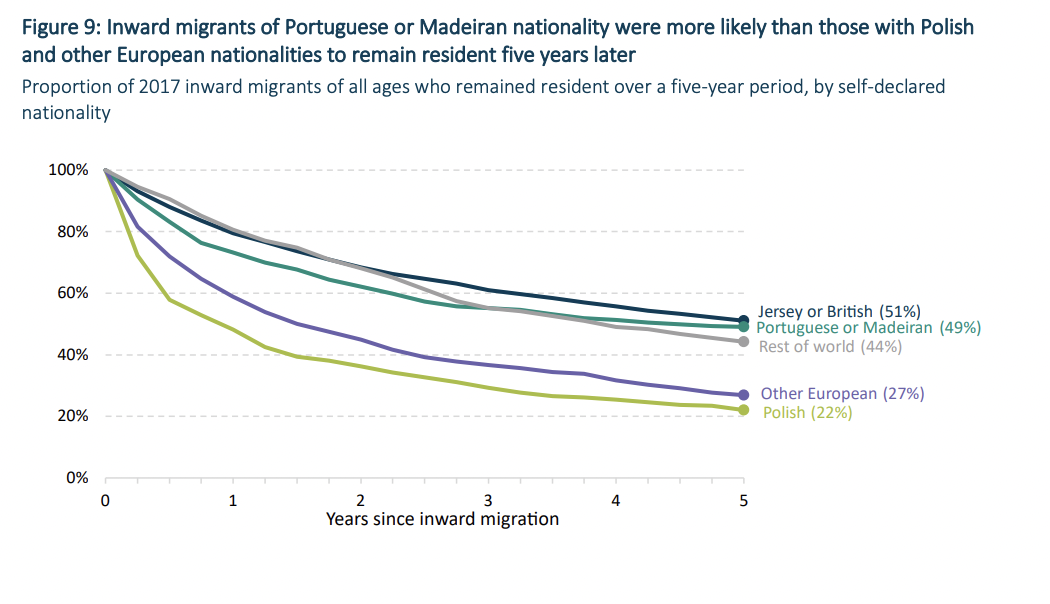
Pictured: Inward migrants of Portuguese or Madeiran nationality were more likely than those with Polish and other European nationalities to remain resident five years later
Workers in high-earning industries were more likely to remain, with 54% staying after five years compared to 35% of those in lower-earning sectors.
Those who remained for five years and had consistent employment saw their nominal wages increase by 47%, equivalent to a 16% rise real terms when adjusted for inflation.
Of the migrants who initially worked in low-earning industries, 17% transitioned to medium or high-earning sectors within six years, but 66% either left Jersey or were no longer working after five years.
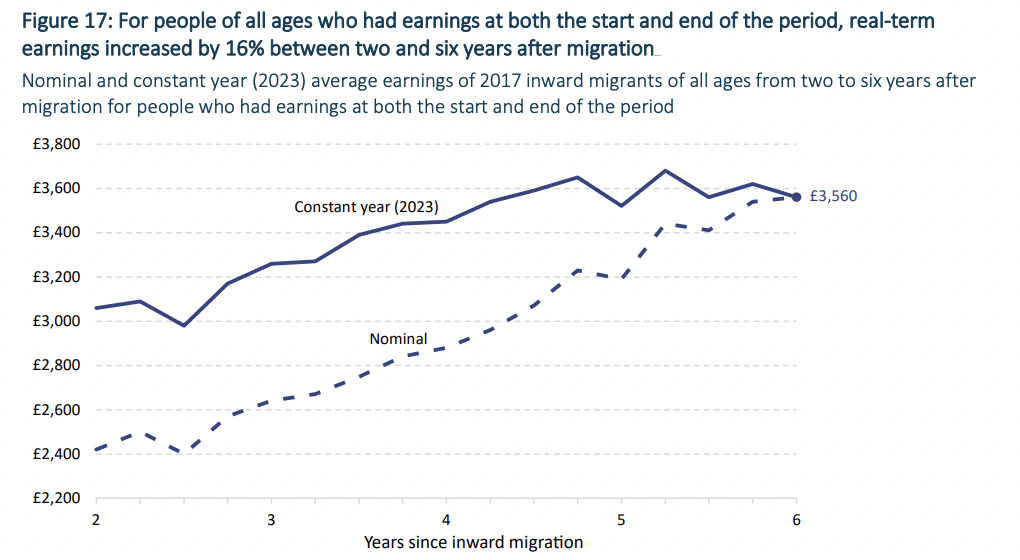
Pictured: For people of all ages who had earnings at both the start and end of the period, real-term earnings increased by 16% between two and six years after migration.
Male migrants tended to earn more than their female counterparts, while those with nationalities outside Europe achieved the highest average earnings.
Younger migrants also saw greater percentage increases in wages over time compared to older groups.
Statistics Jersey has argued that the findings "can help improve understanding on who are most likely to leave or remain living on the island” which can create opportunities to better support retention and attract skilled workers to the island.
Jersey may need 4000 extra care workers by 2040 (June 2024)
EXPLAINED: How much more housing does Jersey need? (March 2024)
New stats highlight continuing 'Bean drain' (Nov 2023)
Comments
Comments on this story express the views of the commentator only, not Bailiwick Publishing. We are unable to guarantee the accuracy of any of those comments.